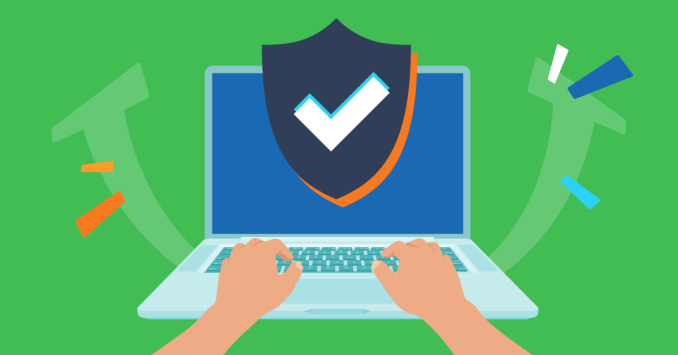Employee Cybersecurity Training: Keep cyber threats at bay and never lose (sleep) to hackers
Secure your org’s future, and rest easy with cybersecurity training

Cybersecurity 101
Enter cybersecurity—an exhilarating frontier within the digital revolution. It stands as a dynamic and essential field that defines the modern era. Its noble mission transcends mere practice. It’s a commitment to fortify computer systems, networks, and invaluable data against the forces of unauthorized access, theft, disruption, or harm.
Armed with the cutting edge of technology, finely-tuned processes, and industry best practices, cybersecurity emerges as the vanguard. A relentless guardian of digital assets that ensures confidentiality, integrity, and availability. In this ever-evolving landscape, we join forces to face a variety of cyber threats like malware, ransomware, phishing attacks, data breaches, and other forms of cybercrime.
Why is cybersecurity important in the modern business landscape?
A strong and effective cybersecurity strategy is essential for thriving in the digital age.
In fact, cybersecurity protects businesses and individuals in various ways:
Data protection: Excellent cybersecurity measures help safeguard sensitive information from unauthorized access and protect customer data, financial records, and intellectual property.
Financial loss prevention: Businesses mitigate risks of theft, fraud, and disruptions, which reduce potential financial losses.
Reputation control: Boosted devotion to industry regulations helps avoid fines and legal consequences.
Compliance & regulatory requirements: Boosted devotion to industry regulations helps avoid fines and legal consequences.
Protection from advanced threats: Proactive cybersecurity measures help organizations defend against evolving and more sophisticated cyber threats.
Risks and consequences of cyberattacks

Businesses
Financial losses (stolen funds, ransom payments, legal fees)
Damage of reputation and loss of customer trust
Intellectual property theft
Business disruptions and downtime
Supply chain disruptions and increased costs
Legal and compliance issues

Individuals
Financial fraud (identity theft, credit card fraud)
Privacy breaches and misuse of personal data
Victimization due to phishing and scams
Cyberbullying and harassment
Damage of personal reputation and exposure of personal information
Credential stuffing (reused stolen credentials) and account takeovers
Types of popular cyber threats
Technology advances constantly in the modern world. As a result, cyber threats are diverse and continuously evolving, as well. The most crucial types of cyber threats people should be aware of are the following:
Malware
Malware, or “malicious software,” is any software intentionally designed to harm, disrupt, or gain unauthorized access to computer systems and data. It can be spotted in various forms, such as viruses, worms, Trojans, and ransomware, and poses significant cybersecurity threats.
Phishing
This cyberattack method involves attackers who impersonate legitimate entities, often through deceptive emails or websites. They trick individuals into revealing sensitive information like passwords or financial details. It’s a common tactic used for identity theft and fraud.
Insider threats
Accidental leaks and wrong actions performed by employees or business partners who have access to sensitive data. These threats can be the result of simple negligence or intentional malicious actions.
Supply chain attacks
Targeted attacks in organizations’ supply chains allow cyber attackers to access the business’ network and systems. Attackers usually compromise third-party vendors, software providers, or contractors.
Common employee-related security risks
Employee vigilance is essential in safeguarding company data against cyber threats. However, it’s possible that employees’ actions due to negligence or lack of awareness regarding cybersecurity best practices can lead to employee-related security risks which pose threats to the organization.
Falling victim to phishing emails or scams
Using weak or easily guessable passwords
Accessing data or systems beyond designated privileges
Using personal devices for work purposes
Sharing sensitive company information on social media
Handling sensitive data improperly
Which companies should offer cybersecurity training to their employees?
Developing a security-conscious culture in an organization is essential in today’s digital landscape. This culture helps foster an environment where cybersecurity is a priority and every employee becomes an active participant in protecting the business from potential cyber threats.
All companies, no matter their size, industry, or scope of operations must offer cybersecurity training for employees. These threats are prevalent and can affect orgs of all types, so it’s imperative that all companies prioritize security awareness among their workforce.
For example, SMEs are often targeted by cybercriminals as they (usually) own fewer resources to protect against cyberattacks. Large enterprises face risks because of their visibility and valuable data. And, organizations like financial institutions, healthcare orgs, government agencies, educational institutions, and more, all handle extremely sensitive information that must be shielded from compromise.

Prioritize your security with TalentLMS
Defend today and secure tomorrow with cybersecurity training
What is cybersecurity training?
Training programs and activities are designed to boost knowledge, skills, and awareness of people and organizations regarding plenty of aspects of cybersecurity. The aim of cybersecurity training is to equip learners with all the necessary tools and understanding to be able to identify, prevent, and respond to cyber threats in an effective, and engaging way.
Cybersecurity training can be tailored to fit the needs of different audiences, like employees, IT professionals, managers, executives, and clients. The training content varies depending on the learner’s roles and responsibilities, as well as any particular cybersecurity risks an organization faces.
Key components cybersecurity training should include
Cyber threat awareness
Best practices
Data protection and privacy
Phising simulation
Emerging threat trends
Compliance and regulations
Incident response
Social engineering awareness
Secure remote work
Cybersecurity policies and procedures
Popular cybersecurity training topics
Explore the ever-evolving landscape of popular cybersecurity training topics. Bolster online security in an interconnected world.
Building an effective cybersecurity training strategy
Cybersecurity training should not be treated as another box to tick. The goal of any organization is to enhance employees’ cybersecurity awareness in a consistent and effective manner so they’re able to successfully retain and apply the knowledge gained during training.
Some tips to follow for creating a successful cybersecurity training strategy are:
Provide hands-on and relatable training
Cybersecurity training programs should use simple language and real-life examples. Forget about industry jargon. Practical, hands-on training makes it easier for employees to remember and apply what they learn during training in their daily tasks. As a result, the effectiveness of training increases.
Perform regular audits
Regular, internal audits help assess current security vulnerabilities. These include checking workstations for noncompliant software and proper password management. Test employees on their knowledge of security policies and, at the same time, observe if the “clean desk policy” is implemented.
Audits allow cybersecurity managers to have a clear idea of what employees do or don’t to safeguard data in their day-to-day at work. These examples help identify training areas that need improvement.
Invest in continuous training opportunities
Cybersecurity training should never be a one-time thing. Regularly repeating cybersecurity training allows employees to retain information, plus keeps them updated on evolving cyber threats. Microlearning modules are an effective way to enhance engagement and enjoyment as they help break down training into smaller, digestible units.
Ensure alignment with company policies
Training programs on cybersecurity should be perfectly aligned with company policies and approaches to digital safety. Training modules should reinforce password-related policies, encourage the use of password managers, and emphasize the clean desk policy, even for remote teams.
Focus on compliance
Recognized security frameworks like ISO 27001 or GDPR should be taken into account when building a cybersecurity training program. A great way to illustrate such frameworks is by including them in the compliance training program to reinforce a culture of security within the organization from the very beginning.
How to design effective cybersecurity training programs
When designing effective cybersecurity training programs, it’s important to have a systematic approach so that participants acquire the necessary knowledge and skills to protect systems, data, and networks from cyber threats. Here’s how to achieve that:
Assess training needs and set clear objectives
For cybersecurity training to be effective assess the specific needs of your audience (i.e., employees, IT personnel, managers, and executives.) Conduct a skills gap analysis to tailor the content to their requirements. Then, set clear training objectives, defining desired outcomes. For example, identifying phishing emails or strengthening network security.
Select training methods
Choose diverse training methods like live workshops, online courses, quizzes, and scenario-based activities. These enhance the effectiveness of your cybersecurity training for employees. Why? Variety in training methods accommodates different learning styles and ensures inclusive training, tailored to individual preferences and needs.
Develop comprehensive content
Create comprehensive cybersecurity training content that includes topics like threat landscapes, social engineering, encryption, and more. Prioritize practical skills by offering step-by-step instructions and hands-on training. This enables participants to apply their knowledge effectively. Last, keep the content up to date to address any evolving cyber threats and technologies.
Make training engaging
Incorporate interactive elements like quizzes, polls, and discussions to promote active learning. Boost motivation through gamification, adding competitive and rewarding elements to the training experience on your LMS. As a result, learners will be motivated and engaged throughout the cybersecurity training for employees.
Promote collaboration
Use group activities and discussion boards to encourage collaboration and knowledge sharing among peers. Allow cybersecurity training participants to work in groups on cybersecurity topics and problem-solving assessments. Plus, on discussion boards, learners will be able to discuss their own challenges from a personal perspective, share insights, and learn from each other.
Promote a security culture
Emphasize the importance of cybersecurity regularly by highlighting the potential consequences of security breaches so that cybersecurity training participants take their training more seriously. Simultaneously, make sure to encourage reporting by teaching employees how to report suspicious activities and potential security threats.
Provide ongoing support
Offer learners supplementary materials, references, and other resources to boost a continuous learning culture. For instance, ready-made, bite-sized videos delivered on your LMS can be used to refresh knowledge or as a point of reference.
Collect feedback
Quizzes, tests, post-training surveys, and evaluations help organizations have a clear idea of how effective cybersecurity training was. Also, by monitoring training participation and by collecting learner feedback it’s possible to identify pain areas that need to be addressed for refining the training content and delivery methods.
Benefits of cybersecurity training for employees and organizations
Cybersecurity training is indispensable for both employees and organizations. This type of training equips employees with the essential knowledge and skills to protect sensitive data. Plus protect the organization against cyber threats.
Employee benefits
Enhanced awareness
Improved security practices
Reduced human error
Effective incident response
Risk mitigation
Empowerment and confidence
Organizational benefits
Stronger defense
Reduced breach costs
Regulatory compliance
Reputation management
Risk management
Partnership & collaboration

Why choose an LMS for cybersecurity training?
Using an LMS for cybersecurity training greatly contributes to building a well-informed and security-aware workforce. With the help of the right cybersecurity training software, employees acquire the necessary skills and knowledge to be able to navigate the digital landscape safely and confidently. And, at the same time, protect the organization and its valuable assets.
Centralized training management
A robust cybersecurity training software provides a centralized platform to manage all the different aspects of training. For example, admins can organize training modules, resources, and schedules in one place. As a result, the coordination and streamlining of the training process becomes easier and faster.
Flexibility and accessibility
Software like TalentLMS makes it easy for employees to access cybersecurity training material anytime and anywhere. The flexibility and accessibility of an LMS is particularly valuable for remote or dispersed teams, as they ensure that everyone can engage in cybersecurity training without any time or location restrictions.

Interactive learning
TalentLMS supports interactive learning features such as quizzes, simulations, multimedia elements, and more. All these interactive components are key to making cybersecurity training engaging and fun, boosting learners’ understanding and retention of more complex concepts.
Personalized learning
The right cybersecurity training software allows instructors to tailor training content to individual employee needs, roles, and skill levels. Personalized learning ensures that each person receives the training they need to successfully address any cybersecurity challenges specific to their responsibilities.

Progress tracking and reporting
Instructors can monitor the progress of their learners’ training journey through the LMS in a more efficient manner. Detailed and customized reporting features offer insights into course completion, participation rates, and quiz and assessment scores that might need extra attention. All this data helps identify knowledge gaps and assess the overall effectiveness of the training program.
Cost-effectiveness
Implementing TalentLMS for cybersecurity training helps more in cost savings in comparison to traditional, in-person, training methods. Physical materials and venue and travel expenses are reduced, making training on your LMS a more cost-effective solution.
Timely updates
Both cyber threats and best practices evolve rapidly in the digital era. As a result, training content must be easily accessible so as to be quickly updated to reflect the latest cybersecurity trends. In this way, employees will be equipped with the most current information to combat emerging threats.
Increased trust in the workplace
Employees who receive thorough cybersecurity training through the proper training software gain confidence in protecting sensitive data and feel they contribute to a secure work environment. This increased trust creates a more vigilant and security-conscious workforce.
How to select the right cybersecurity training software
Ready-made content
The software should offer a wide range of ready-made cybersecurity topics, covering both fundamental concepts and advanced techniques.
Interactive learning
Opt for software that offers the option to create quizzes, simulations, scenario-based courses, and microlearning to boost engagement and retention.
Adaptability
Prioritize an LMS that accommodates diverse learning styles and adapts to self-paced learning.
Certification
Choose an LMS that offers certifications so that learners can demonstrate their expertise in cybersecurity matters.
Reporting and analytics
Ensure your cybersecurity training software provides detailed and customized progress tracking and performance analytics.
Customization
Select a software like TalentLMS that allows you to tailor training content to meet specific needs.
Ease of use
Your software should have a user-friendly interface to boost engagement and adoption.
Mobile accessibility
As remote work is becoming more and more popular, choose software that is accessible on various devices, including mobile phones and tablets.
Security measures
The LMS itself should adhere to high-security standards. Check for features like encryption, user authentication, and data protection.
Vendor reputation and support
Research the software vendor and make sure they provide reliable customer support, regular updates, and responsive assistance.
Integrations
To facilitate cybersecurity training, make sure your LMS offers videoconferencing and HR software integrations.
Cost & ROI
Assess the software’s pricing regarding the value it provides. Consider the long-term ROI in terms of improved cybersecurity practices and reduced risks.
Becoming CyberSavvy: Empowering your digital defenders
Cybersecurity employee training is paramount. Technology advances, and with it, the complexity of threats also grows. This is why businesses should prioritize employee cybersecurity training; after all, employees are the frontline against cyber threats.
Training employees on cybersecurity is a continuous commitment for businesses that want to stay ahead of the evolving threats. By offering consistent and updated training in an engaging way, organizations empower employees to counter any tactics employed by cybercriminals.
Cybersecurity is a shared responsibility. Each employee’s contribution and awareness lead to organizational resilience. Training is not just an option, but a proactive measure for longevity, reputation, and success in the digital age. Investing in a vigilant workforce is the most crucial defense.
Train your people. Measure results. Drive growth.
TalentLMS gives you the tools to supercharge every step of your training.









Social engineering awareness
During cybersecurity training, learners should learn about the tactics used in social engineering attacks, and how attackers manipulate individuals to divulge sensitive information. Train employees to be cautious when sharing personal or company-related information over the phone, email, or social media. Encourage them through training to verify the authenticity of requests before sharing any information.